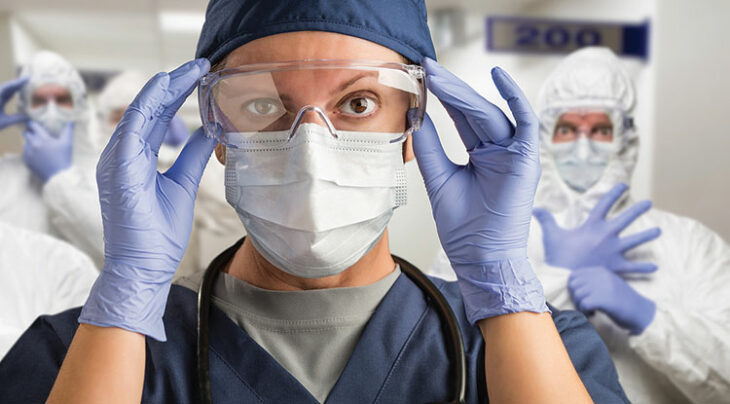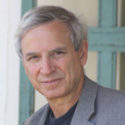This June I retired from being an emergency room doctor. For some, “retirement” creates an image of relaxation — gardening, vacations in the RV and popping a few rounds of golf. Not me. Although I enjoy gardening and traveling, I need to feel useful. The abrupt termination of my medical career brought a summer chill of confusion and disharmony.
I had anticipated perhaps settling into a walk-in clinic role, like the handful of ER doctors who’d retired before me. However, nothing became available, and I was faced with weeks without medical practice.
Then the COVID clinics came calling. Memorial Hospital of Gulfport set up a scattering of drive-in testing stations staffed by nurse practitioners. Due to a shortage of personnel, and with my availability, I was offered the opportunity to help out.
At first, I hesitated to accept. Although in good health, 67 years old put me at increased risk. But a job is a job, and a need to help patients always comes first. I donned my mask and showed up at 8 a.m. for a nine-hour shift.
People suspected of having the infection drove up, lowered their windows and registered with the aides. If deemed appropriate, the practitioner would then step up and examine them, then order the test. Initially we only had the three-day test. We’d obtain a nasal-swab sample and promise to call the patient with results. About mid-November we obtained the 15-minute test — much more useful to patients’ needs.
When I started working these clinics in mid-September, we had about 30 patients during our nine-hour shift, plenty of time to relax between encounters and take an extended lunch hour. By October we breached 50, and in November, our tally topped 70. Seventy patients in a nine-hour shift meant lines forming down the parking lot, no time for lunch and exhaustion by the end of the shift.
Then December arrived, and the pandemic spread like spilled wine, its stain reaching through schools, businesses and churches. We topped 100 patients a day, and the tally kept rising. Twenty cars awaited our opening. Lines stretched beyond the parking lots and into the streets. Orderly and efficient, we dispersed good and bad news at about a three-to- one ratio.
Occasionally patients would ask me about the fake news propagated by unreliable media: “This isn’t any worse than the common flu, right?” Wrong. It’s about 10 times as deadly and often leaves long-term disabilities.
“Will you prescribe chloroquine and Z-pak for me?” some would ask. No, they don’t help. Sometimes I’d get the question “Masks are pretty worthless, right?” Incorrect. If you’d worn one, you may not have gotten infected.
“So, what CAN I do?” they’d ask. It turns out that once infected, not much. I explained that current recommendations include over-the-counter vitamins, Pepcid and Melatonin. Certain qualifying patients may be scheduled to go to the infusion clinic for monoclonal antibodies and steroids. Mostly, though, I advised rest, isolation, and, if they started feeling much worse, going to the emergency room. About once a day I saw a patient already sick enough that he or she needed to be sent to the hospital immediately for probable admission.
When I’d board airplanes or register to sell at events, inevitably I’d be asked, “Have you been exposed to anyone with the COVID virus?” Why yes — frequently. The CDC recommends isolation after exposure, but how was that going to work for me and the other workers at the COVID clinic?
By late December, the COVID testing situations at the Cedar Lake clinic had gotten out of control. Patients trying to see their personal physicians couldn’t get past the COVID mob. The exhausted clinic workers begged for relief. The hospital secured a new expanded spot for us in D’Iberville. On the first day they opened, the crew there tested 150 people.
Sometimes the French girlfriend and I consider why we haven’t gotten the virus. Sure, we’ve been moderately careful, wearing our masks for public activities like shopping or picking up fast food. But we’ve traveled, eaten out with friends and, well, I work in the COVID clinic. Mostly, I think, we’ve been lucky. We’ve known many who haven’t been so fortunate — friends on Facebook, obituaries in the news and statistics galore. Our prayers go out to them and their families.
On Dec. 21, I received my first vaccine shot, the Moderna version. Suddenly I felt armored. I still mask up in public, but now I have hope — a vision that this crisis will come under control and life will return to normal. I haven’t seen my grandson since this started, nor my other children in over a year. With my second shot scheduled for late January, I’ve made plane reservations to visit my son and daughter in North Carolina in February. I believe life will return to normal by this autumn. Meanwhile, to everyone out there, be careful, be patient, wear your masks and look forward to a healthy new year!
Dr. Philip L. Levin is a retired emergency medicine specialist in Gulfport. Learn more or contact him at www.Doctors-Dreams.com.



